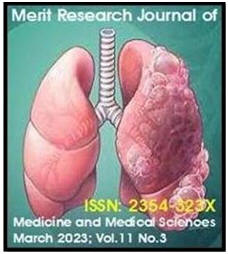
|
|
|
|
|
|
/ / MRJMMS Home / / About MRJMMS / / Submit Manuscripts / / Call For Articles / / Editorial Board / / Archive / / Author's Guide / /
|
Other viewing option
• Full text •Reprint (PDF) (193 KB)
Ayada
C
|
Original Research Article Evaluation of Oxidative Stress Parameters in Chronic Obstructive Pulmonary Disease before Medical Treatment |
|||
|
Ceylan Ayada1*, Umran Toru Erbay2 |
||||
|
1Department of
Physiology, Faculty of Medicine, İzmir Bakircay University,
İzmir, Turkey
Received: 27 February 2023 I Accepted:
24 March 2023
I Published: 29 March 2023 I Article ID:
MRJMMS23008 |
||||
|
Abstract |
||||
|
It is known that
the pathophysiology of chronic obstructive pulmonary disease (COPD),
a disease that develops against inhaled harmful chemicals and is
characterized by progressive airway obstruction, is associated
with oxidative stress. However, due to inconsistent findings,
the oxidative status of COPD is not fully understood. It is
thought that determining the oxidative state in detail may be an
effective diagnostic criterion in the diagnosis of COPD. In
addition, supplementing antioxidative mechanisms with diet or
drugs is among the new treatment strategies. Total antioxidant
status (TAS), total oxidant status (TOS), paraoxonase (PON1),
arylesterase (ARES), total thiol (THIOL) levels were examined in
COPD and control. Oxidative stress index (OSI) ratios were
calculated. Oxidative balance did not change according to
healthy individuals, although we observed a tendency to increase
together in oxidative and antioxidative parameters in COPD
patients. We observed that the tendency to increase
antioxidative capacity in COPD patients is independent of PON1,
ARES, and THIOL. When compared to the control group, the serum
thiol parameter of the COPD group was shown to be significantly
low. We think that the decrease in serum thiol parameter can be
considered as a new indicator to confirm the diagnosis of COPD. |
Merit Research Journals© 2023 || Advertisement | Privacy policy.
